
Browse an alphabetical list of photographs. These historical images portray people, places, and events before, during, and after World War II and the Holocaust.
<< Previous | Displaying results 1-25 of 54 for "Photo" | Next >>
After the occupation of Odessa, Ukrainian Jews wait to register. Odessa, Soviet Union, October 22, 1941.
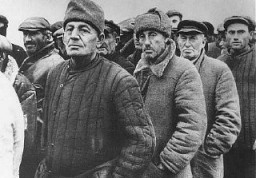
Waitstill and Martha Sharp supervise the arrival of 14 tons of milk products to distribute to children in the region. Pau, France, August 1940.
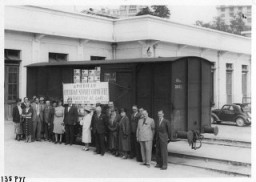
Waldemar Hoven, head SS doctor at the Buchenwald concentration camp, testifies in his own defense at the Doctors Trial. Hoven conducted medical experiments on prisoners. Nuremberg, Germany, June 23, 1947.
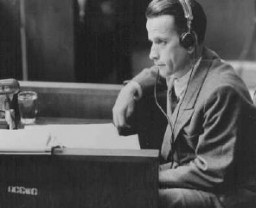
Walking to a ceremony; from left to right: Dr. Carl Clauberg, Dr. Enno Lolling, Karl Höcker (behind), Richard Baer, Dr. Eduard Wirths, Karl Bischoff (behind Wirths on the right) Rudolf Höss, and Karl Möckel.
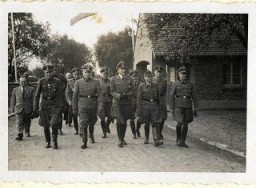
Polish civilians walk by a section of the wall that separated the Warsaw ghetto from the rest of the city. Warsaw, Poland, 1940–41.
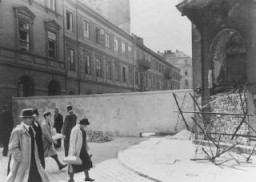
View of the wall surrounding the cemetery of the Hadamar euthanasia killing center. Jagged pieces of glass were placed on the wall to discourage observers. This photograph was taken by an American military photographer soon after the liberation of Hadamar. Germany, April 5, 1945.
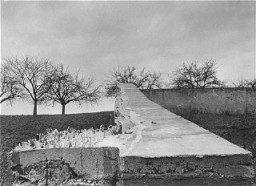
Wanted poster, published by the Rewards for Justice program, seeking key perpetrators who have been indicted by the International Criminal Tribunal for Rwanda (ICTR).
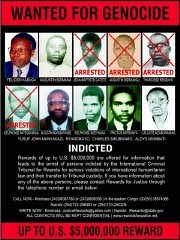
War crimes investigators interrogate chief nurse Irmgard Huber in connection with mass killings at the Hadamar Institute, one of main facilities in the Nazi Euthanasia Program. Hadamar, Germany, May 1945.
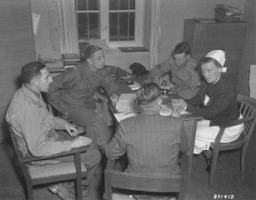
At the time of the International Military Tribunal, the city of Nuremberg reflected the devastation of war, as did much of Europe. This landscape of destruction stands in stark contrast to the Nazi rallies held in Nuremberg only years earlier.
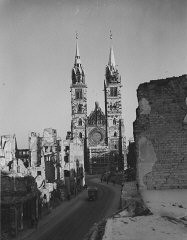
View of Rotterdam after German bombing during the Western Campaign in May 1940. Rotterdam, the Netherlands, May 1940.
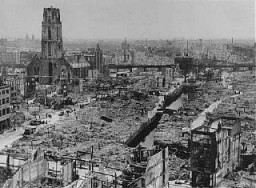
A sign outside the Breendonk transit camp warning that trespassers will be shot. Breendonk, Belgium, 1940-1944.
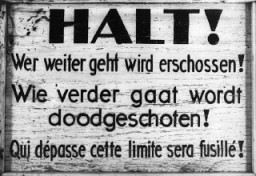
A sign, in both German and Latvian, warning that people attempting to cross the fence or to contact inhabitants of the Riga ghetto will be shot. Riga, Latvia, 1941–43.
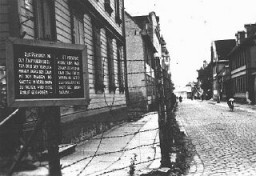
Soldiers from the Kiliński Battalion of the Polish Home Army take a German prisoner during the Warsaw Polish uprising. August 20, 1944.
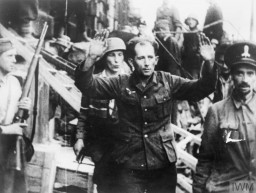
Commercial area on Nalewki Street in Warsaw's Jewish quarter. Warsaw, Poland, 1938.
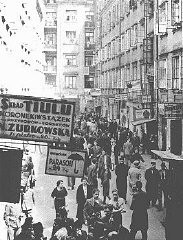
A wartime photograph of Magdalene Garber in the 1940s, likely taken in Berlin, Germany. Magdalene (“Leni”) Garber was born to Joseph Garber, a Togolese man, and Johanna Maychrzak in January 1919 in Germany. Magdalene grew up in Berlin-Neukölln and worked as a performer from an early age. She was part of several ethnographic shows, including a variety of Mohamed ben Ahmed’s Afrika-Schau during the late 1920s through the early 1930s, and the German Africa Show (Deutsche Afrika-Schau) during the Nazi…
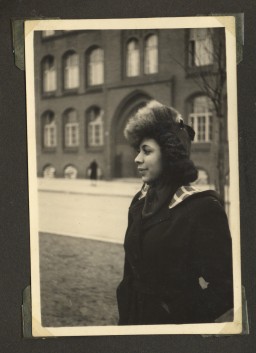
View of a watchtower and prisoner barracks at the Ohrdruf subcamp of the Buchenwald concentration camp, soon after US forces liberated Ohrdruf. Ohrdruf, Germany, April 1945.
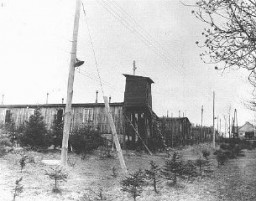
A view of one of the watchtowers and part of the perimeter fence at Ohrdruf, part of the Buchenwald camp system, seen here after US forces liberated the camp. Ohrdruf, Germany, April 1945.
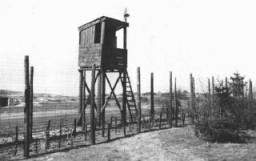
Ustasa (Croatian fascist) guard next to a watchtower at the Jasenovac concentration camp. Yugoslavia, between 1941 and 1944.
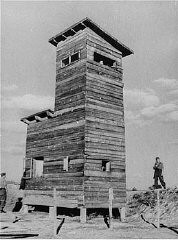
A British guard in a watchtower at Poppendorf displaced persons camp, after the arrival of Jewish refugees forced from the "Exodus 1947" refugee ship. Photograph taken by Henry Ries. Germany, September 1947.

Teenager Simon Jeruchim learned of the Allied invasion of German-occupied France (D-Day) on a shortwave radio. He painted a watercolor depiction of the bombing and burning of a town situated on a river. He titled the piece "Memory of June 6, 1944." Simon Jeruchim was born in Paris in 1929 to Samuel and Sonia (née Szpiro), Jewish émigrés from Poland. In July 1942, Simon’s parents were able to find hiding places for him and his siblings, but they were arrested and deported to Auschwitz before they…
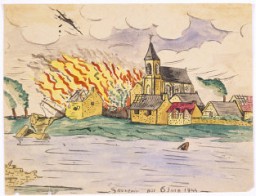
An elderly German Jewish woman wearing the compulsory Jewish badge. Berlin, Germany, September 27, 1941.
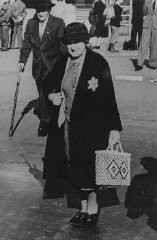
Blanka and Harry celebrate their wedding anniversary in a New York café. At the time, Blanka was expecting their first child.
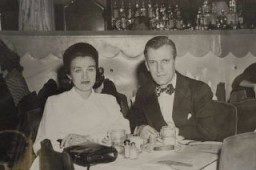
Family and friends are gathered for a Jewish wedding celebration in Kovno. Among those pictured are Jona and Gita Wisgardisky (standing at the back on the right). In the summer of 1941 soon after the German occupation of Lithuania, the Wisgardisky family was forced into the Kovno ghetto. During a roundup of children in the ghetto in 1942, Henia (Gita and Jona's daughter) was hidden in a secret room that her father built in a pantry in their apartment. Later she was smuggled out of the ghetto and…
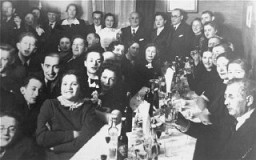
Photograph taken during the wedding of Ibby Neuman and Max Mandel at the Bad Reichenhall displaced persons' camp. Germany, February 22, 1948.
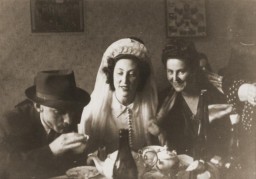
Wedding of Blanka Rothschild's daughter, Shelly, in 1974. The wedding took place at a temple in New York.
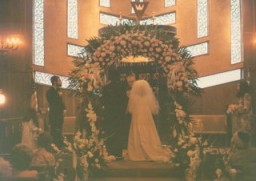
We would like to thank Crown Family Philanthropies, Abe and Ida Cooper Foundation, the Claims Conference, EVZ, and BMF for supporting the ongoing work to create content and resources for the Holocaust Encyclopedia. View the list of donor acknowledgement.